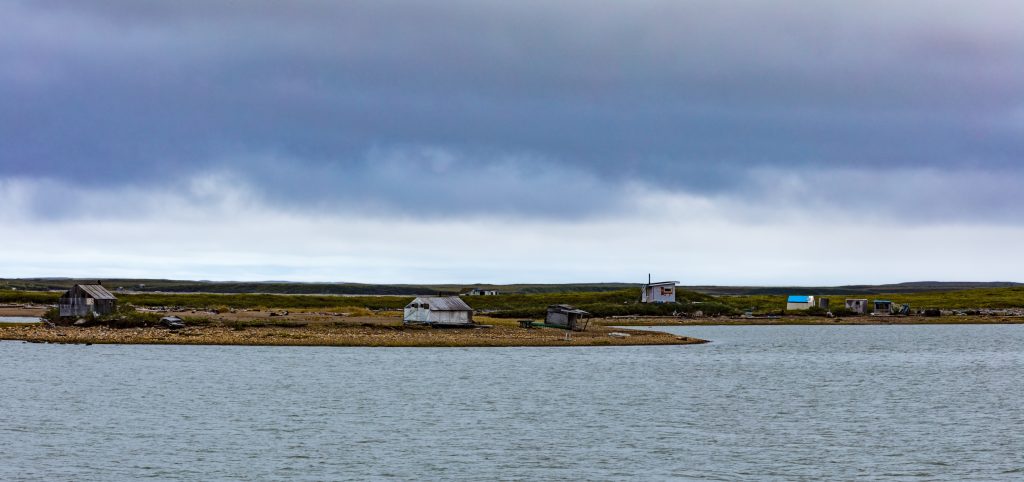Introduction
Poverty is often solely defined in terms of income. According to the Organisation for Economic Co-operation and Development (OECD), a household is considered poor if it earns less than half the median income in that specific country. Canada’s Market Basket Measure (MBM) – its official poverty line calculation tool – uses the cost of food, clothing, transportation, and shelter to determine whether families can meet a modest, basic standard of living.
Historically, monetary measures of poverty gained traction after World War II, when governments sought to rebuild economies and identify social policy priorities. Later, these measures were widely adopted across regions such as Africa and Latin America to target extreme poverty and track progress in development policy.
In economics, there is a long-standing recognition of the limitations of income-related poverty measures. While they provide a useful entry point for identifying material deprivation, they capture only one aspect of well-being. Given the strong correlations between income and other dimensions such as health, education, food, and housing, economists often use income measures as a starting point for discussion rather than an end in themselves.
Multidimensional Poverty in Global Development
While useful, measures such as the MBM tell only part of the story. For many Indigenous peoples and nations, poverty cannot be captured by income, consumption, or material needs alone. It is rooted in relationships to land, culture, and community – dimensions invisible to traditional Western economic metrics.
Development economists increasingly recognize poverty as a multidimensional issue that extends well beyond income. Modern approaches – such as the Multidimensional Poverty Index and Human Development Index – incorporate broader measures of well-being, equality of opportunity, and the ability to realize one’s potential. Moreover, because of this understanding, multidimensional poverty measures and wider approaches to poverty lie at the heart of development economics and shape modern public policy. This shift reflects the understanding that poverty, deprivation, and well-being are distinct but related concepts, each requiring their own measurement tools and perspectives.
Indigenous Perspectives on Well-Being
Indigenous worldviews understand wellness wholistically: physical, emotional, spiritual, and intellectual well-being are interconnected with land and kinship. As the First Nations Information Governance Centre (FNIGC) notes, these relationships shape experiences of deprivation in ways that are social, cultural, and spiritual – not just economic or material.
Many Indigenous languages lack a direct translation for “poverty,” reflecting different conceptions of well-being and deprivation. Colonialism, forced displacement, the legacy of Residential schools, and resource loss have imposed external systems of value that continue to shape Indigenous experiences of inequity today.

For those living on-reserve or in the northern territories, poverty data is also often incomplete or misrepresented, making it difficult to form an accurate picture of need. Poverty in Indigenous communities is deeply multidimensional and interwoven with history, governance, and culture. Recognizing and measuring these broader dimensions is essential to truly understanding the challenges Indigenous peoples face and to developing solutions that reflect lived realities.
“Poverty is primarily rooted in the failure to uphold [Indigenous rights and treaty rights]… Restricted access to health, education, and income [is] deeply rooted in historic issues that contribute to Indigenous poverty today.”
-Dr. Allyson Stevenson, Gabriel Dumont Institute Chair in Métis Studies, University of Regina
There are also significant data limitations preventing the systematic use of wider multidimensional poverty-related measures for First Nations, Inuit, and Métis peoples. Many federal and provincial datasets do not adequately capture the lived realities of Indigenous communities, limiting both the accuracy and the policy usefulness of existing indices.
Dimensions of Poverty in Indigenous Communities
Multidimensional poverty encompasses a broad range of deprivations that impact living standards and quality of life. The following serves as a starting point to better understand poverty from an Indigenous perspective.
1. Housing and Infrastructure
Access to safe, adequate housing remains one of the most visible inequalities experienced by Indigenous peoples and nations. In 2021, 17.1% of Indigenous people lived in overcrowded homes – double the rate of non-Indigenous people (9.4%). This significantly worsens on-reserve: nearly one in five First Nations people on-reserve (21.4%) lived in crowded dwellings, and one in three First Nations people living on reserve (33%) lived in a home that required major repairs. These conditions perpetuate cycles of inequality, affecting health, safety, and educational outcomes.
2. Health and Well-Being
Poor health both causes and reinforces poverty. For example, poor health constrains employment opportunities, which then limits one’s income, and ultimately, reduces access to healthcare and increases financial hardship.
Indigenous communities continue to face barriers to equitable healthcare, compounded by the intergenerational effects of Residential Schools and the Sixties Scoop. Chronic illness, mental health challenges, and reduced life expectancy are direct outcomes of these structural inequities.
Statistics Canada (2016) found that even after age adjustments, mortality rates among First Nations people living on reserve were 70% higher than the national average.
3. Education
Education is a key pathway out of poverty, yet systemic barriers persist. As of 2016, only 63% of First Nations youth had completed high school compared to 91% of non-Indigenous youth. Post-secondary completion rates remain low, with only 37% of Indigenous people holding a degree or diploma.
As reported by UNESCO, basic education has the potential to reduce poverty in 171 million people worldwide. These disparities stem from underfunded schools, limited access to post-secondary supports, and the lingering effects of colonial education systems.

4. Employment and Income
Employment outcomes reflect persistent gaps. In 2021, employment rates were:
- 47% for registered First Nations living on-reserve.
- 55% for Inuit.
- 58.7% for First Nations living off-reserve.
- 69% for Métis peoples.
- 74% for non-Indigenous Canadians.
Even when employed, Indigenous workers earn less – about 9% lower hourly wages than their non-Indigenous peers.
5. Food and Material Deprivation
Food insecurity is a major indicator of multidimensional poverty. In 2022, 40% of Indigenous households experienced food insecurity, rising to 62% among Inuit. Geographic isolation, high food prices, and loss of access to traditional food systems all contribute to this crisis.
Despite representing less than 6% of Canada’s population, Indigenous peoples account for up to one-third of unhoused people, underscoring the intersection of housing, health, and food insecurity. Due to data miscounting and exclusions, the actual rate could range anywhere between 20% and 50%, or even 11% and 96%.
6. Political Marginalization
Political engagement and participation are among the main social determinants that can either reproduce or reduce poverty. However, for Indigenous peoples, colonial and jurisdictional barriers continue to limit access to essential services. The Royal Commission on Aboriginal Peoples (RCAP) identified systemic exclusion and the Indian Act as enduring contributors to poverty and overrepresentation in the justice system.
Even today, First Nations children face administrative “jurisdictional mazes” when seeking healthcare or education services, despite the commitments of Jordan’s Principle.

7. Cultural and Land Dispossession
Perhaps the most profound deprivation is cultural. The loss of language, governance, and access to land – driven by forced relocation and assimilation – has disrupted traditional economies and knowledge systems. A 2024 BC Assembly of First Nations report emphasized that poverty for First Nations includes loss of identity, heritage, spirituality, and cultural continuity.
Final Thoughts: Moving Towards Indigenous-Defined Measures of Poverty
Poverty in Indigenous communities is multidimensional and relational, shaped by colonial history and structural inequalities. Addressing it requires moving beyond simple income thresholds to include Indigenous-defined indicators of well-being – such as cultural continuity, language revitalization, and land stewardship.
No single measure or index can fully explain poverty. Instead, a range of complementary approaches – including monetary, multidimensional, human development, deprivation, and subjective well-being indices – can provide a more wholistic understanding of how inequality operates.
In Canada, there are ongoing efforts to co-develop First Nations Indicators of Poverty and Well-Being that integrate Indigenous knowledge systems and values into data frameworks. These initiatives represent important steps toward building measures that reflect Indigenous priorities and realities.
Ultimately, programs and policies aimed at reducing poverty among Indigenous peoples must engage with these broader dimensions of well-being – spirituality, language, kinship, and relationship to land – to ensure that solutions are not only measurable but also meaningful.
What is now required is a transformational shift in how poverty among Indigenous peoples is understood, measured, studied, and addressed. True progress will mean supporting Indigenous-led data collection, Indigenous-defined indicators of well-being, self-governance, and self-determined solutions that restore autonomy, dignity, and connection to land and culture.










Share the article